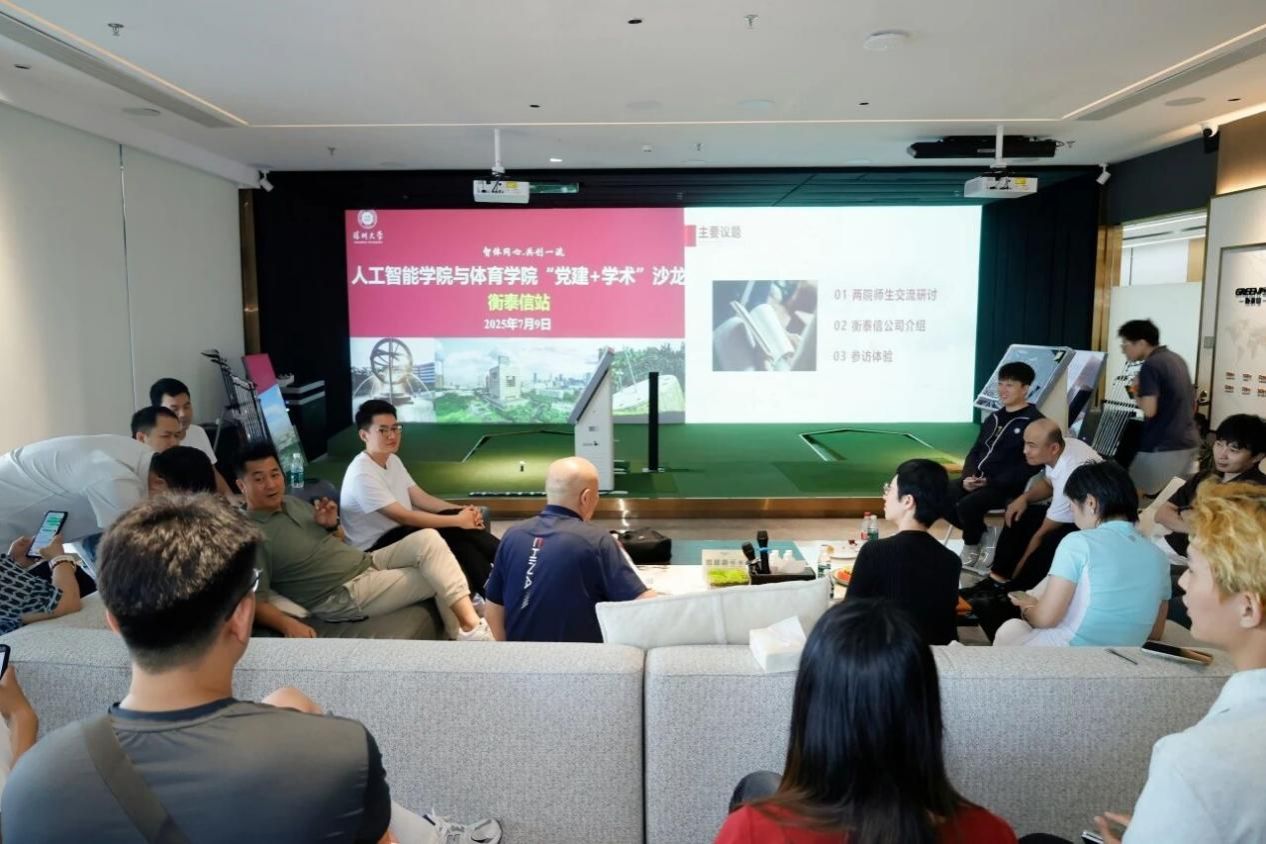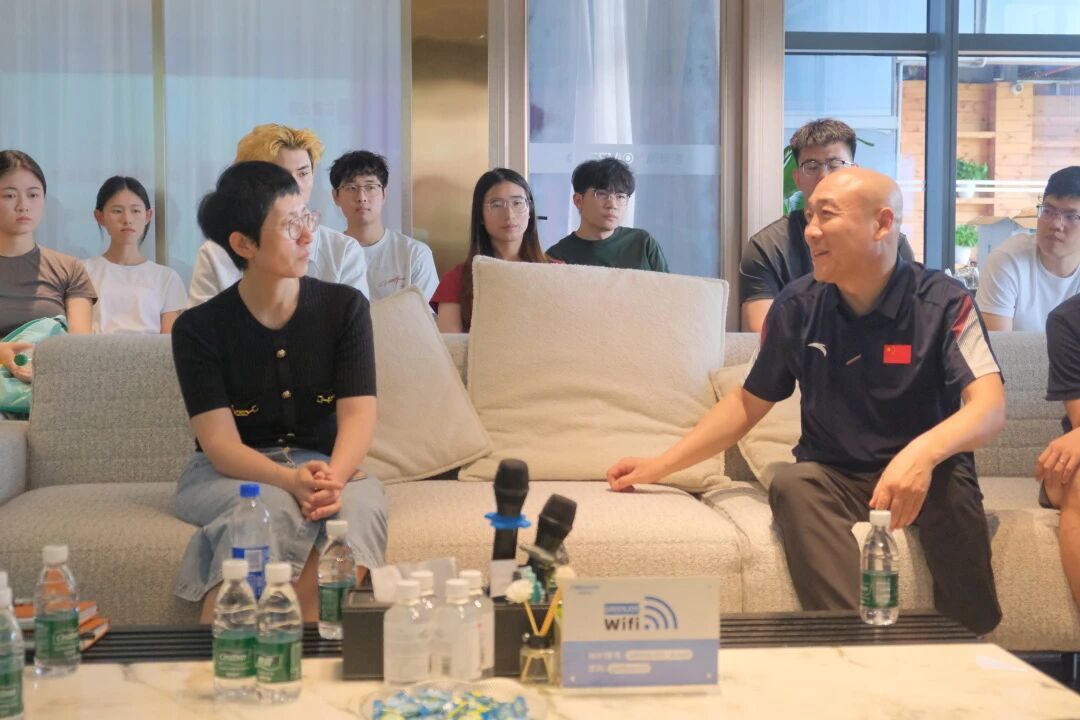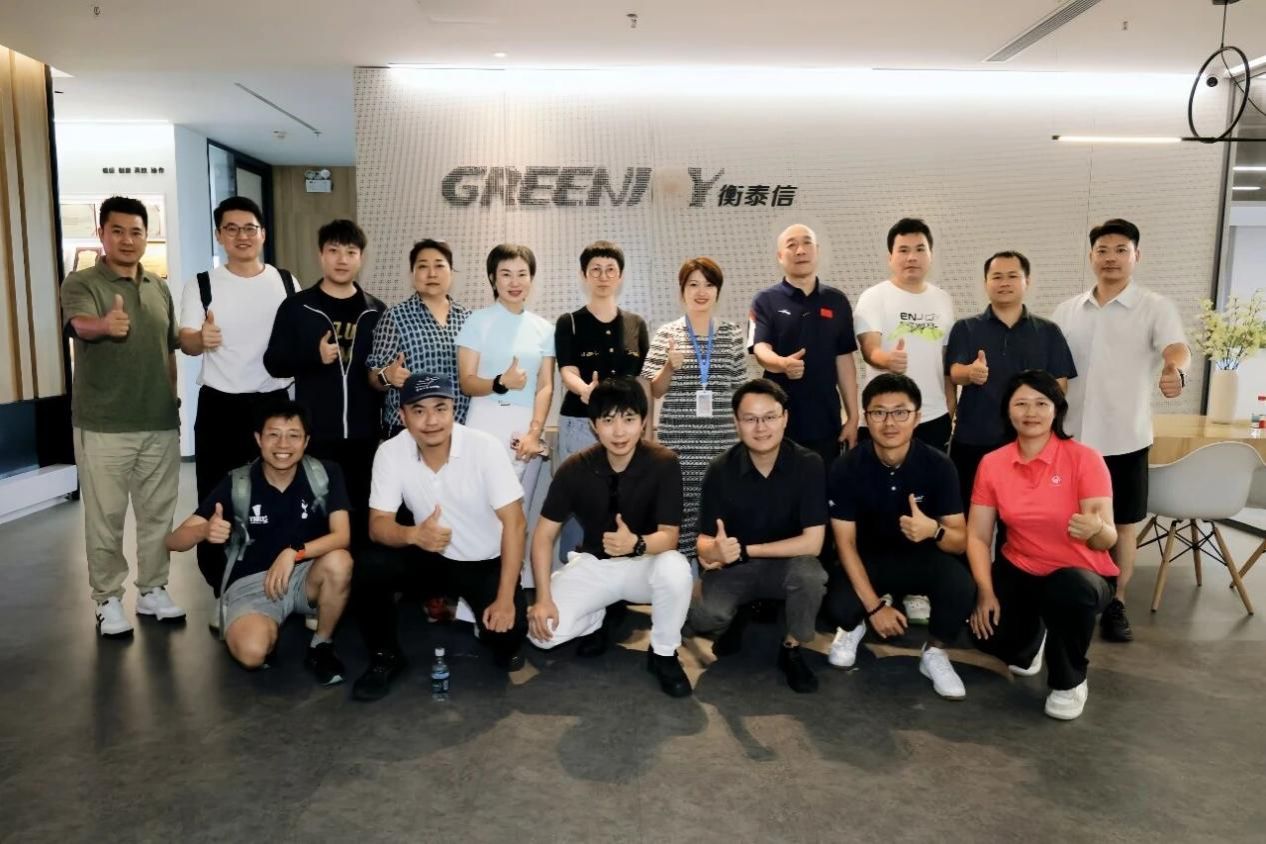On the afternoon of July 9, 2025, the inaugural session of the “Integrating Intelligence and Sports, Co-creating Excellence” Party-Building & Academic Salon—jointly organized by the School of Physical Education and the School of Artificial Intelligence at Shenzhen University—took place successfully at HengtaiXin Technology Co., Ltd. in Shenzhen Bay. Professor Liu Jian, Dean of the School of Physical Education, and Professor Pan Yinghui, Head of the Intelligent Engineering Department at the School of Artificial Intelligence, led more than 20 faculty members and students from both schools in attending the event.

At the opening of the event, Professor Liu Jian, Dean of the School of Physical Education, delivered an opening speech, clearly stating that the salon aims to promote interdisciplinary integration and deep collaboration among industry, academia, and research under the guidance of Party-building initiatives. He emphasized that HengtaiXin Technology was selected as the partner for this inaugural session precisely because of its technological strengths in applying artificial intelligence to sports, offering a practical platform for the two schools to explore innovative models of interdisciplinary cooperation.

During the Party-building collaboration exchange session, faculty members from both schools engaged in an in-depth discussion on organizational linkage mechanisms. They proposed leveraging the “Liyuan Youth Solving Hundreds of Challenges” Party-building initiative as a key vehicle to jointly advance collaborative research projects, co-develop resources, and co-cultivate talent. The participants expressed a strong commitment to actively building a synergistic “Party-Building + Research” framework that mutually reinforces both domains, with a particular focus on empowering Party-member specialists to play exemplary and leading roles in tackling critical scientific and technological challenges.

The academic exchange session was marked by vibrant intellectual exchanges and notable highlights. Faculty from the School of Artificial Intelligence focused on the "big health" domain, presenting cutting-edge research outcomes such as AI-based image recognition for adolescent scoliosis screening and emotion recognition in older adults using eye-tracking technology. Meanwhile, faculty from the School of Physical Education shared insights on data modeling for elite athletic training and conceptual frameworks for tactical optimization systems. They also proposed collaborative development of wearable devices and intervention algorithms for sports injury prevention, highlighting promising opportunities for future joint efforts in designing intelligent, personalized exercise prescriptions.Graduate students from both schools actively engaged in the discussion, raising thoughtful questions on interdisciplinary methodologies and ethical considerations in technology application, which further energized the lively atmosphere. Professor Liu Jian emphasized: “The discipline of physical education must establish a standardized data system to provide high-quality datasets that support robust AI models, thereby driving academic innovation through data-driven approaches.”

Following the academic session, participants toured the HengtaiXin corporate exhibition hall under the guidance of company executives and experienced the AI-powered golf training system firsthand. Integrating millimeter-wave radar and computer vision technologies, the system enables precise analysis of swing mechanics, vividly demonstrating AI’s transformative potential in redefining traditional sports training paradigms.Faculty and students expressed great enthusiasm during the visit, remarking that “technology is reshaping the learning pathways of motor skills” and that “real-world sports scenario data will offer vast application prospects for affective computing and intelligent feedback models.”

This inaugural “Integrating Intelligence and Sports” Party-Building & Academic Salon represents a profound, interdisciplinary, and multi-dimensional exploration of collaboration. It has not only advanced innovative integration between sports science and artificial intelligence but also expanded new practical avenues for Party-building initiatives in higher education.Looking ahead, the two schools will continue to deepen their collaborative model grounded in “Party-building leadership and synergistic innovation,” jointly forging a new paradigm of interdisciplinary talent cultivation that harmonizes intelligence and physical education. This effort aims to provide high-caliber human capital in service of national strategic needs and to inject sustained momentum and innovative vitality into Shenzhen University’s mission of becoming a world-class, internationally influential comprehensive university under China’s “Double First-Class” initiative.







